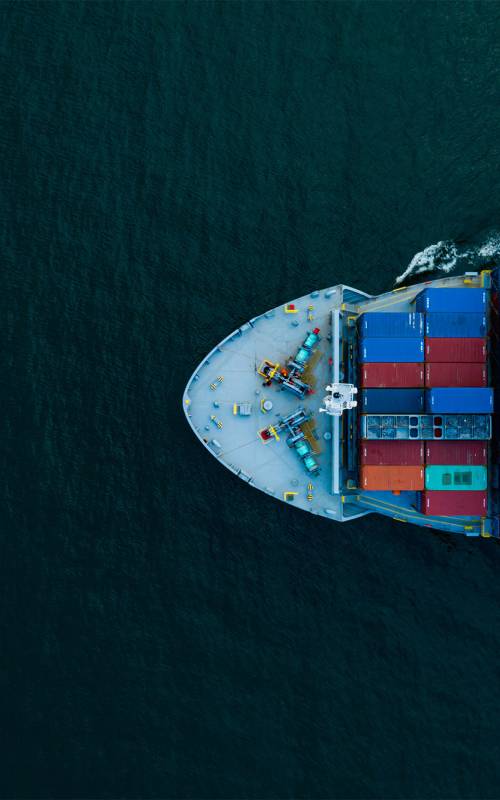Seafreight - Info about sea freight
Seafreight Forwarding Sea Transport are three words that are inextricably linked and are synonymous with the increasing importance of sea transport and sea freight worldwide. Sea freight forwarding Sea transport means that goods in the form of bulk goods, general cargo or containers by sea are transported in domestic or international sea transport.
Increasing globalisation and the revived worldwide trade have led to an increased importance of seafreight in recent years. The transport of goods by sea is important for global networking. Approximately 80 % of export business worldwide is handled by sea freight forwarding companies. Every year, approximately 8 billion tons of goods are transported thousands of miles by sea. Crude oil and oil-based products account for the largest share of sea freight, closely followed by valuable raw materials such as iron ore and coal. But also grain and other various dry cargoes reach their destination by sea, organised by sea freight forwarding companies. In many large international ports, including ports such as Rotterdam and Hamburg, extensive projects are currently underway to improve the infrastructure of the respective locations.
The increasing importance of seafreight forwarding is mainly due to the low freight costs. For example, a transport of a TEU container (Twenty- foot Equivalent Unit) with 20 tons of freight from Asia to Europe costs about the same amount as a comparable flight in economy class for one passenger. If an entrepreneur transports one tonne of iron ore from Australia to Europe, the freight forwarder costs him only 12 dollars.
The use of seafreight keeps the total cost of the products relatively low. For example, the sea transport costs of a television from Asia to Europe, handled by a sea freight forwarding company, only account for 1.4 percent of the total costs. The standardisation of container ships and the growing deadweight capacity of the ships make a significant contribution to the low transport costs of sea freight. In 1968 the world's largest container ship loaded 752 TEU containers. Two decades later there were already more than 4000 of these containers. Worldwide, sea freight is transported by about 51 000 vessels. The world's largest container ship shipping company not only has a total capacity of more than 550 container ships or 2 million TEU containers, it also owns the largest container ships of all. These container ships can now carry up to 14,000 TEUs.
More than 54 per cent of the global sea freight is controlled by companies from only five countries, first and foremost Greece (16.8 per cent), followed by Japan (15.6 per cent), Germany (9.1 per cent), China (8.2 per cent) and Norway (4.5 per cent). Maritime transport is therefore highly concentrated.
In order to keep the costs of seafreight forwarding low, the leading sea freight nations do not register their fleets in their own countries for the most part, but rather operate under foreign flags, for example Panama and Liberia.



